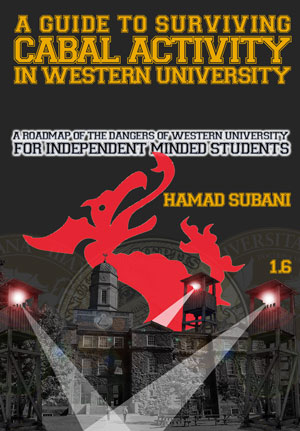Is there really a Cliff in the Rye Field? A critical interpretation of one of the most memorable literary memes

There’s a Catcher in there, BEWARE!
This article is a derivative of my original article on J.D. Salinger, produced for the Henry Makow website (It is recommended reading the original article before this one, for some perspective). The focus of this article is the most famous lines in The Catcher in the Rye, those of the protagonist Holden Caulfield talking to his sister. The title of the book is derived from these lines. It is important to note that this book actually is a very intense personal story, and Holden Caulfield embodied the young Salinger.
“Anyway, I keep picturing all these little kids playing some game in this big field of rye and all. Thousands of little kids, and nobody’s around–nobody big, I mean–except me. And I’m standing on the edge of some crazy cliff. What I have to do, I have to catch everybody if they start to go over the cliff–I mean if they’re running and they don’t look where they’re going I have to come out from somewhere and catch them. That’s all I’d do all day. I’d just be the catcher in the rye and all. I know it’s crazy, but that’s the only thing I’d really like to be. I know it’s crazy.”
The establishment media has always interpreted these lines as Holden’s concern for the rest of humanity. But in the book, we discover that Holden is a cynic, and cares little about humanity. He always strikes the reader as extremely narcissistic, bipolar and passive-aggressive. He hates the school atmosphere because he has to rub shoulders with working server class Americans. But of course, this does not mean he has no need for the rest of us. He helps himself to attractive women of the same server class he despises, and actually gets into a fight with a roommate who is more successful at getting them. He wears a deer hunter cap, which he describes to his roommate as a “people-shooting hat,” which is a metaphor for a predator-prey relationship. He strangely feels at peace in the museum, where he can judge the exhibits, but the petrified` exhibits, locked in glass cages, can’t judge him back. In the real world, anything out of place, such as street graffiti, greatly disturbs him. Like the Ruling Elite, Salinger/Holden fear and loathe change and spontaneity, and instead love predictability. In another of Salinger’s stories Raise High the Roof Beam, Carpenters, the protagonist throws a stone at the head of his sweetheart just because she was looking so beautiful. In his personal life too, Salinger left behind a trail of damaged girls.
What could explain Salinger’s/Holden’s sudden spurt of concern for the children in the rye?
The answer lies in understanding that Salinger/Holden are not ordinary members of the American server class. They are the megalomaniacs who run the show. What distinguishes them from us is not higher intelligence, better abilities or even more wealth. Rather, they possess an inexplicable tendency to catch/protect/possess/save/detain/control us. This is comparable to a greedy farmer, who always prefers to see cattle tilling his fields, as opposed to freely wandering on their own.
The vision of other people going about their business is deeply disturbing to the Criminal Elite, as is the vision of children running around in a rye field. They have to insert themselves into the situation. But not as an equal. Salinger/Holden does not envision himself as just another child in the rye field, but as the ONLY adult there. And he wants to catch the rest of the children.
This will sound dark, sociopathic and creepy to most reasonable readers. But Salinger closely followed his dear friend Ernest Hemingway’s iceberg theory of writing. According to this theory, if a writer alludes to things that he has detailed knowledge about while deliberately omitting a lot of information, it will only make the narrative more intriguing and compelling. (On the other hand alluding little details about stuff the writer knows nothing about will immediately be noticed by readers). In this case, Salinger alludes to the dark mindset of the Criminal Elite (which he is strangely proficient with), but immediately misdirects by adding another detail – the cliff. We are told that this tendency of catching children in the rye is not the result of psychopathy but because there is some kind of cliff looming on the border of the rye field, and Salinger/Holden wants to catch them for their own protection. The kids are oblivious to the cliff, and only Salinger/Holden can see the cliff. We are expected to trust his judgment that there is indeed there a cliff looming in the background, which only he can see. But what if there was no cliff? And Salinger/Holden created it to conceal their misanthropic worldview from readers oblivious to the idea of an American ruling class?
In conclusion, we are the kids running around and Salinger/Holden has a psychopathic need to assert his control over us……not because we may fall over a cliff. There may not even be a cliff at all. But Salinger/Holden invents the cliff to distract from the real danger to the kids, which is himself. This is so typical of how countless police states, tyrannies, regimes and governments assert their control over free people by claiming to protect them from imaginary threats (enemies, terrorists, environmental disasters, Muslims and so on) while being the real enemies of their people. Rather than clinically examine their own sociopathic tendencies and megalomania, the Criminal Elite convince us that without them, we may fall over some “cliff.” Even if there was no cliff in the first place. But there has to be a cliff/danger lurking out there, and we must be incapable of dealing with it on our own, otherwise who would need the services of The Catcher in the Rye? And once The Catcher in the Rye gets hold of you, how do you escape from his clutches? Does he ever intend to let go?
It is pitiable that in our times, a metaphor for dark psychopathic tendencies became the anthem of a generation.




























Very good analogy of the entire scheme of this messed up America.